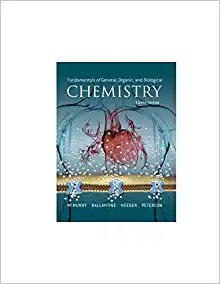Question
EXPERIMENT: DEMONSTRATING POLAR PROPERTIES Some substances are polar and some are not. It is not so difficult to demonstrate a difference between these two classes
EXPERIMENT: DEMONSTRATING POLAR PROPERTIES
Some substances are polar and some are not. It is not so difficult to demonstrate a difference between these two classes of materials. This experiment is designed to help reveal the properties of polar and nonpolar substances.
Here are your goals for this lesson:
Describe experimental outcomes in terms of molecular shape and polarity
Apply ideas to the findings of other scientists
These supplies are needed:
acetate (overhead transparency material) strip and tissue paper vinyl strip and woolen cloth slow, steady stream of water from a faucet
Follow these directions and answer these questions.
1. Rub the acetate strip with the tissue paper. 2. Bring the strip near a slow stream of running water.
What happened when the strip was brought near the stream?
From your ideas about charges on acetate and vinyl strips, predict what will happen if a charged vinyl strip is brought near the slow stream of water. (Review Unit 4.)
3. Test your hypothesis. Rub a vinyl strip with a woolen cloth. 4. Bring the charged strip near a slow stream of water.
Now analyze your prediction.
a. Was your prediction correct?
b. If not, propose a reason for the difference.
Analyze the shape of H2O. a. What is the shape of the H2O molecule? b. Is it symmetrical? c. Does this mean that the H2O molecule is polar or nonpolar?
Analyze the bonds of CCl4. a. What is the shape of the CCl4 molecule? b. Is it symmetrical? c. Does this mean that the CCl4 molecule is polar or nonpolar?
Assume that the water stream is replaced by a stream of CCl4. Predict what would happen in each case.
a. charged acetate strip:
b. charged vinyl strip:
c. Explain your predictions.
Chemists have found that charged acetate and vinyl strips have no effect on a stream of CCl4. Does this fact match your prediction?
Develop a model or picture of water, H2O, and carbon tetrachloride, CCl4, that would account for observations with the charged strips for the two compounds.
Step by Step Solution
There are 3 Steps involved in it
Step: 1

Get Instant Access to Expert-Tailored Solutions
See step-by-step solutions with expert insights and AI powered tools for academic success
Step: 2

Step: 3

Ace Your Homework with AI
Get the answers you need in no time with our AI-driven, step-by-step assistance
Get Started


